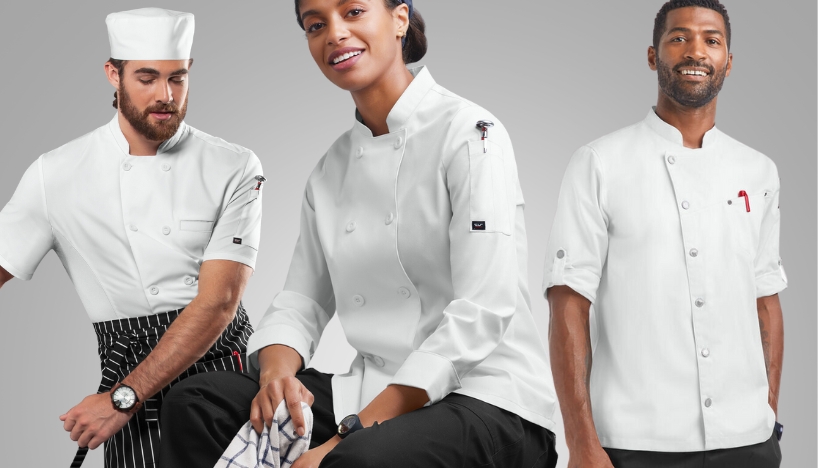Why Chefs Wear White?

When we picture a chef, we often think of them in a white jacket, a tall hat, and houndstooth pants. But have you ever wondered why chefs wear white? It turns out there are several reasons why this has become a longstanding tradition in the culinary industry.
In case you were wondering…here are some reasons
First and foremost, the white Chef uniform is practical for working in a kitchen. It is designed to be lightweight and breathable, which is essential in a hot and fast-paced environment. Chefs are often working with high heat and flames, and the white jacket helps to reflect heat away from the body. Additionally, the uniform is typically made from cotton or a cotton blend, which is easy to clean and maintain. Chefs need to be able to move around freely in the kitchen, and the white uniform allows for this without being restrictive.

- Chefs wear white for hygiene purposes. The white color makes it easy to spot any dirt or stains, which can then be quickly removed. This is important in a kitchen, where cleanliness is of utmost importance. Chefs are also required to wear an apron and a hat, which further helps to prevent contamination and hair from falling into the food.
- The white uniform is also a symbol of professionalism and expertise. When a chef is dressed in a white jacket, it signifies that they take their job seriously and are committed to their craft. It also allows them to stand out in a crowded kitchen and be easily recognized by their colleagues and customers. In many ways, the white uniform has become a symbol of the culinary industry itself, representing the creativity and precision that goes into making a great meal.
- There are also cultural and historical reasons why chefs wear white. In Japan, for example, the traditional chef’s uniform is a white kimono-style jacket called a happy coat. This style of dress dates back to the Edo period, when chefs would wear the coat while working in the kitchen. The color white was seen as a symbol of purity and cleanliness, and it was believed that wearing the coat would help to ward off evil spirits.
Chef Jackets throughout History
Interestingly, the tradition of wearing white dates back to the 19th century, when the famous chef Marie-Antoine Carême introduced the concept of the chef’s uniform. At the time, chefs wore dark, heavy clothing, which was not practical for working in a kitchen. Carême designed a new uniform that was both functional and stylish, featuring a white jacket with long sleeves and a high collar.
The design was inspired by the white coats worn by doctors, which were seen as a symbol of cleanliness and professionalism.
Over time, the uniform has become an integral part of the culinary world, with chefs across the globe adopting a similar dress code. In fact, many culinary schools require their students to wear a white uniform as part of their training. This not only prepares them for a professional kitchen but also instills in them a sense of pride and respect for the industry.
In France, the birthplace of modern cuisine, chefs have a long history of wearing white. The French term for a chef jacket is “veste blanche,” which literally translates to “white jacket.” This tradition dates back to the early 19th century, when chefs began wearing white jackets to distinguish themselves from the kitchen staff. It was also a way to show off their expertise and professionalism.
In addition to the white jacket, chefs also wear other items that have a specific purpose. The tall, pleated hat, or toque, is designed to keep hair out of the face and prevent sweat from dripping onto the food. The black-and-white checkered pants, or houndstooth, are not only stylish but also help to hide any spills or stains that may occur while working in the kitchen.


